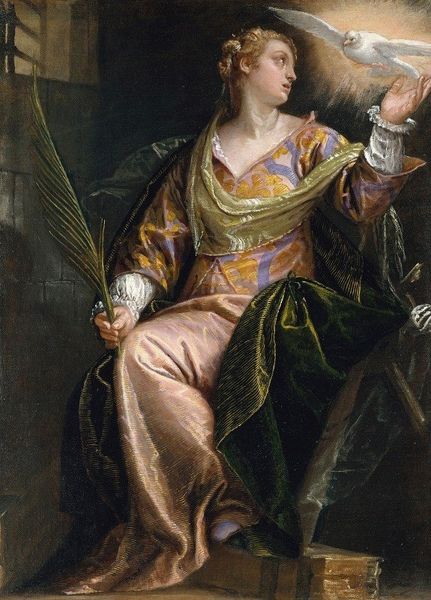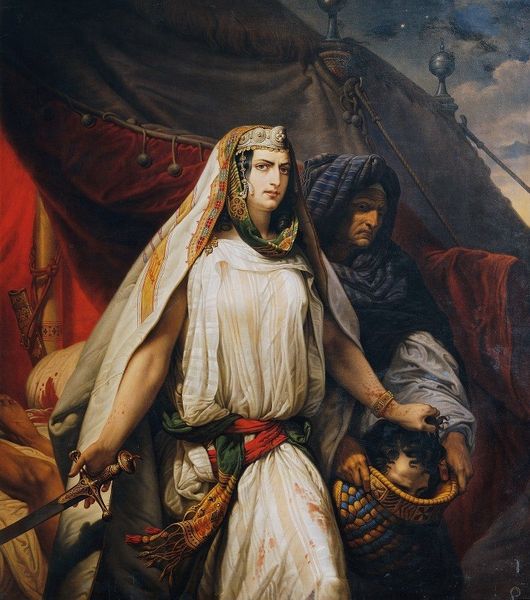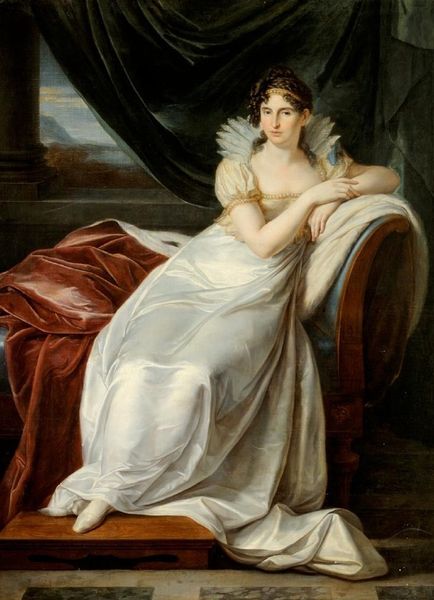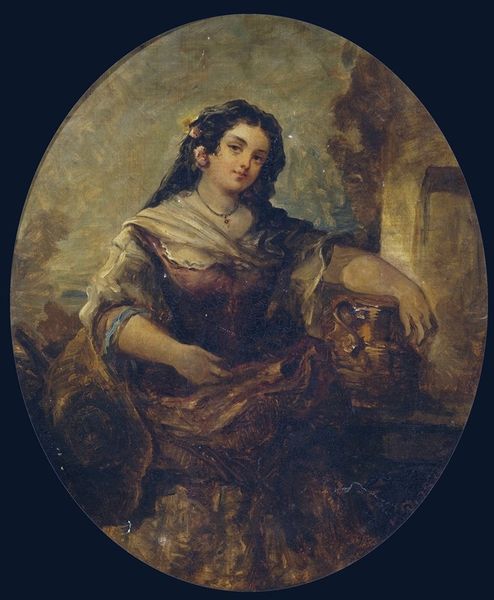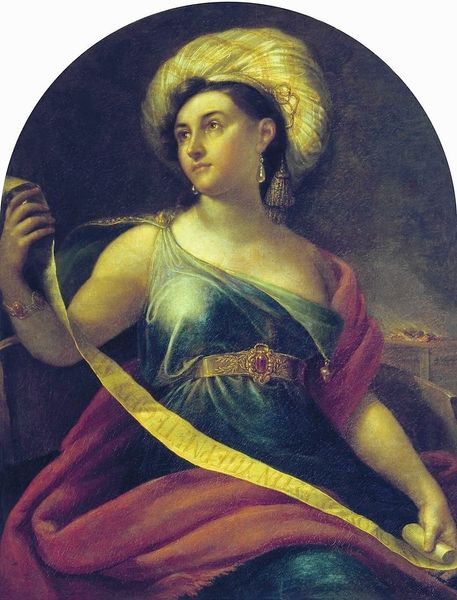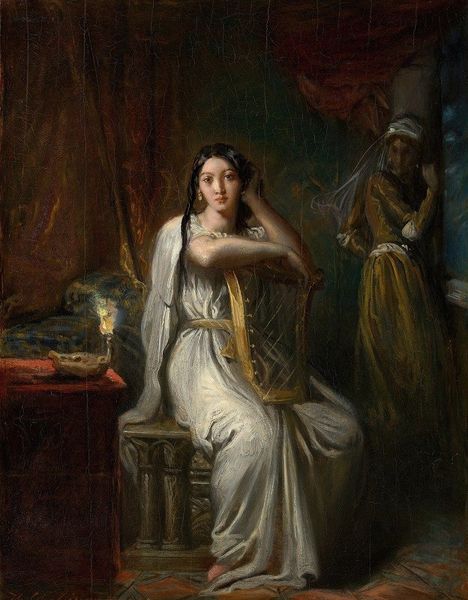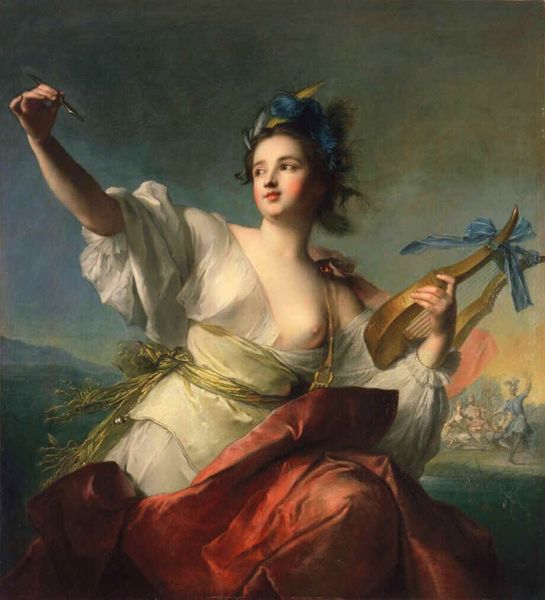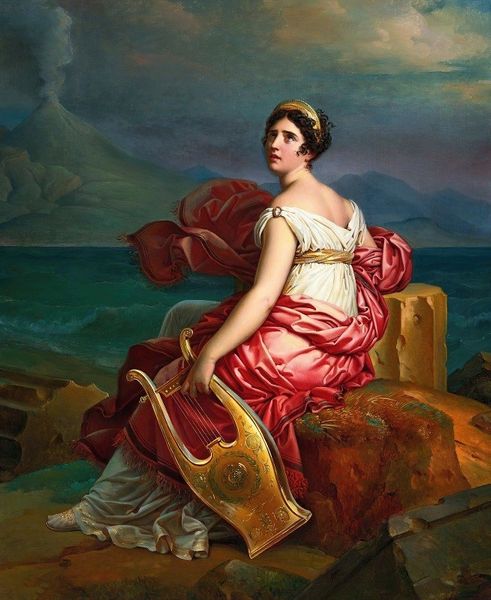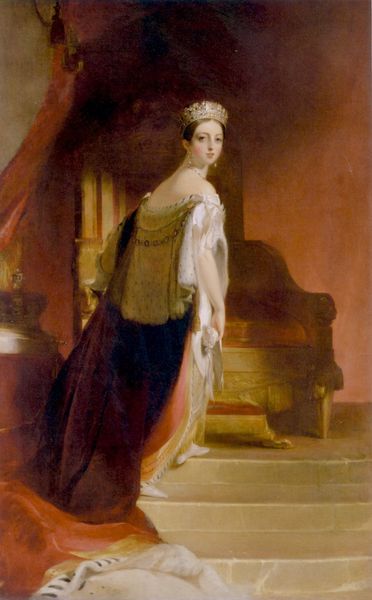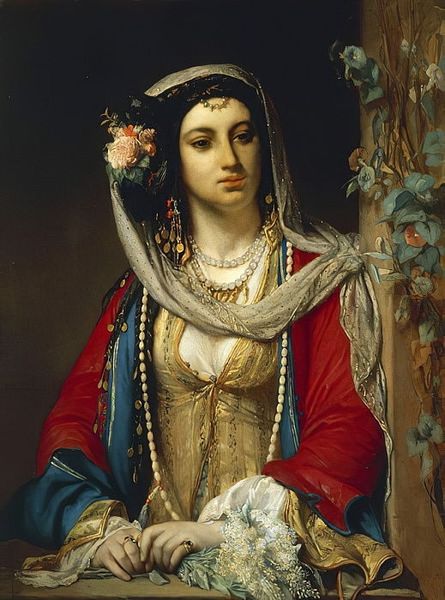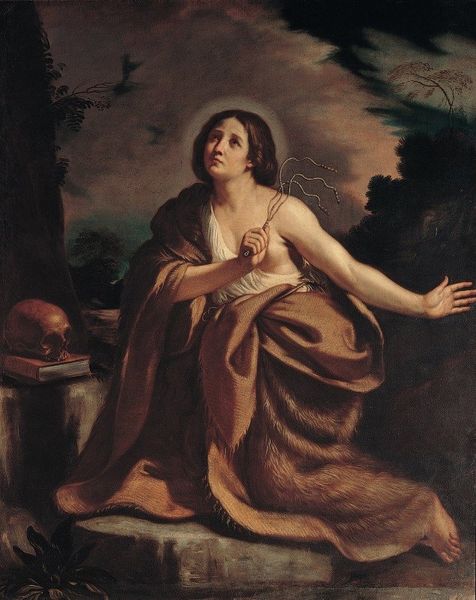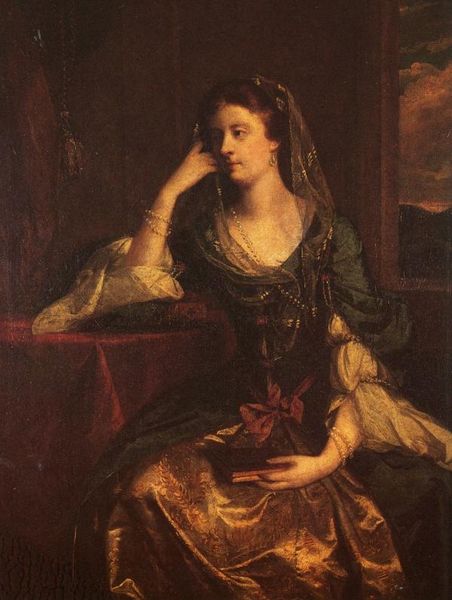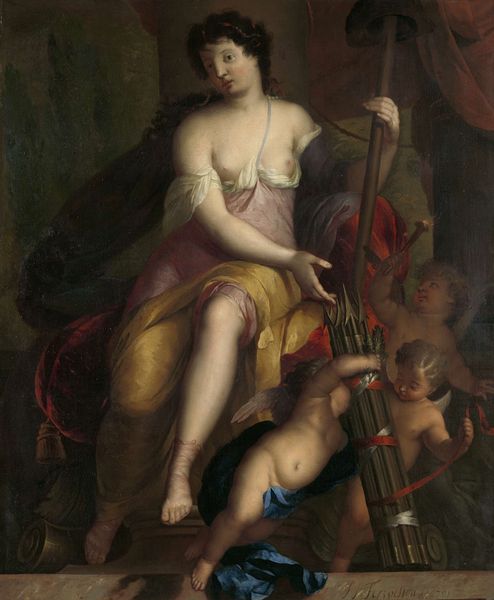
Greece expiring on the Ruins of Missolonghi 1826
0:00
0:00
eugenedelacroix
Musée des Beaux-Arts de Bordeaux, Bordeaux, France
painting, oil-paint
#
allegory
#
painting
#
oil-paint
#
war
#
landscape
#
figuration
#
oil painting
#
romanticism
#
mythology
#
history-painting
#
portrait art
Dimensions: 209 x 147 cm
Copyright: Public domain
Editor: So, here we have Eugène Delacroix’s *Greece expiring on the Ruins of Missolonghi* painted in 1826. It’s an oil painting that just exudes this sense of tragedy and despair. I'm curious, what do you see when you look at this piece, especially considering its historical context? Curator: It's impossible to separate this painting from the political climate of its time. Delacroix is not just painting a picture; he’s crafting a visual statement about the Greek War of Independence, particularly the siege and massacre at Missolonghi. Notice how the central figure, representing Greece, is allegorical. It invokes pathos, connecting to a rising European sentiment that the Greek cause against Ottoman rule was not just a war but a moral imperative. How do you perceive her placement within the landscape of ruins? Editor: It amplifies the sense of devastation, right? The rubble under her bare feet, the fallen figure…it all seems designed to evoke an emotional response in the viewer. But it's almost like romanticizing the struggle, isn’t it? Curator: Precisely. Romanticism was inherently linked to nationalist movements and the rise of the public sphere, fueling sentiments about the ‘authentic’ nation against oppressive empires. Consider the painting’s exhibition history and its reproductions – these shaped and amplified Delacroix’s visual commentary, aligning artistic expression with European political activism in support of Greek independence. The canvas operates almost as propaganda. Editor: So, it’s less about historical accuracy and more about creating a powerful narrative, meant to sway public opinion? I never thought about how much the socio-political environment shaped a painting. Curator: Indeed. And thinking about its present display – what narratives are being constructed through this piece’s place in today's museum? The ways museums categorize, contextualize, and display such works carry the weight of historical interpretations. It reflects ongoing dialogues about representation, cultural heritage, and political engagement in art. Editor: I suppose understanding the painting is just the beginning, then? We also have to understand its journey since it was created? Curator: Exactly! Art doesn't exist in a vacuum; it's part of a long and evolving cultural and political discourse. Editor: That gives me a lot to think about. Thanks!
Comments
No comments
Be the first to comment and join the conversation on the ultimate creative platform.
